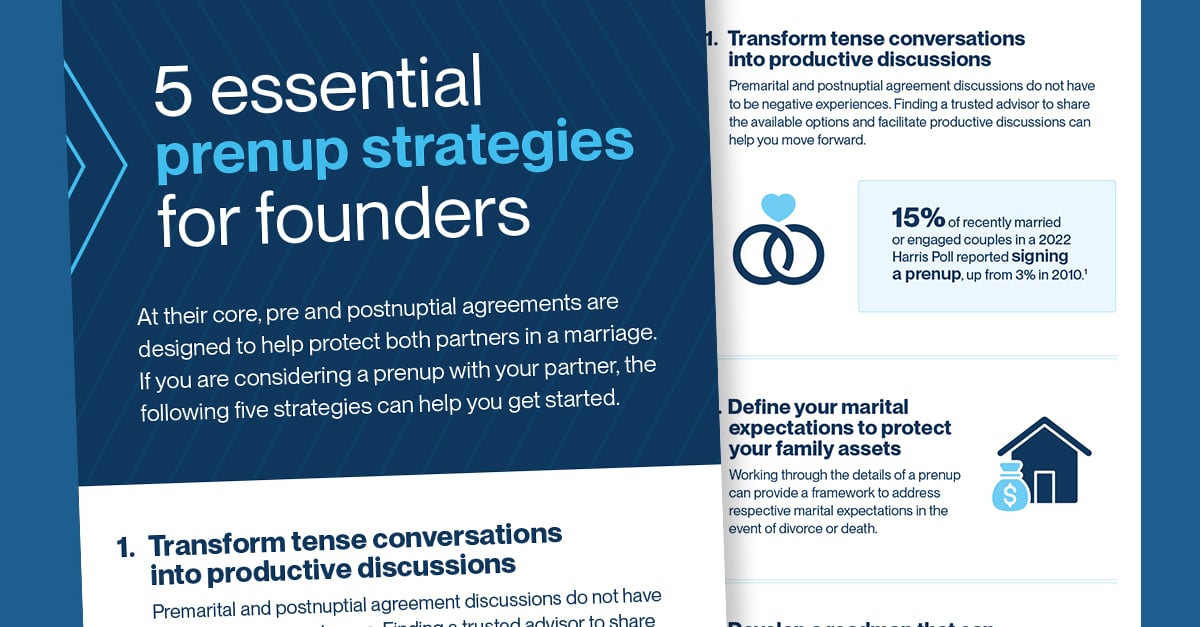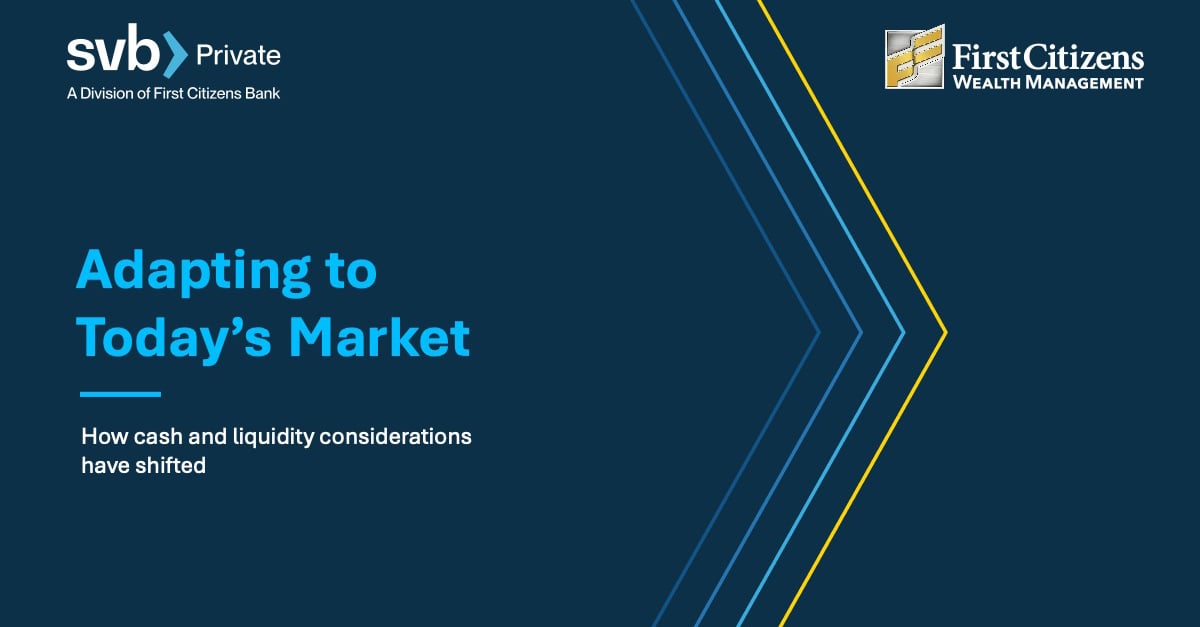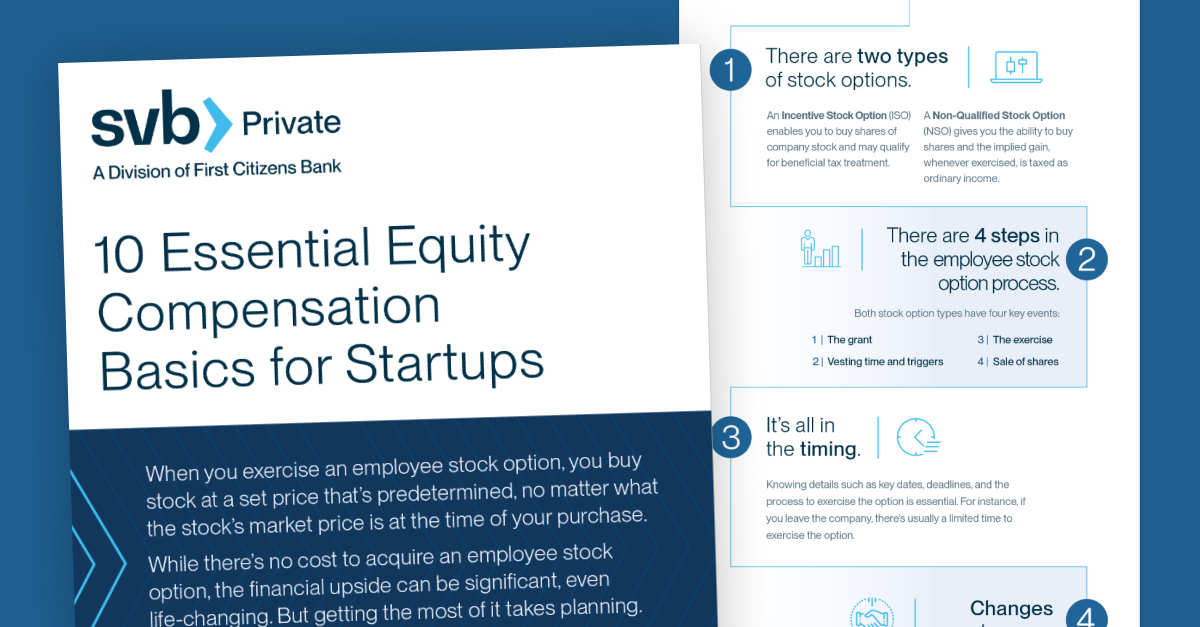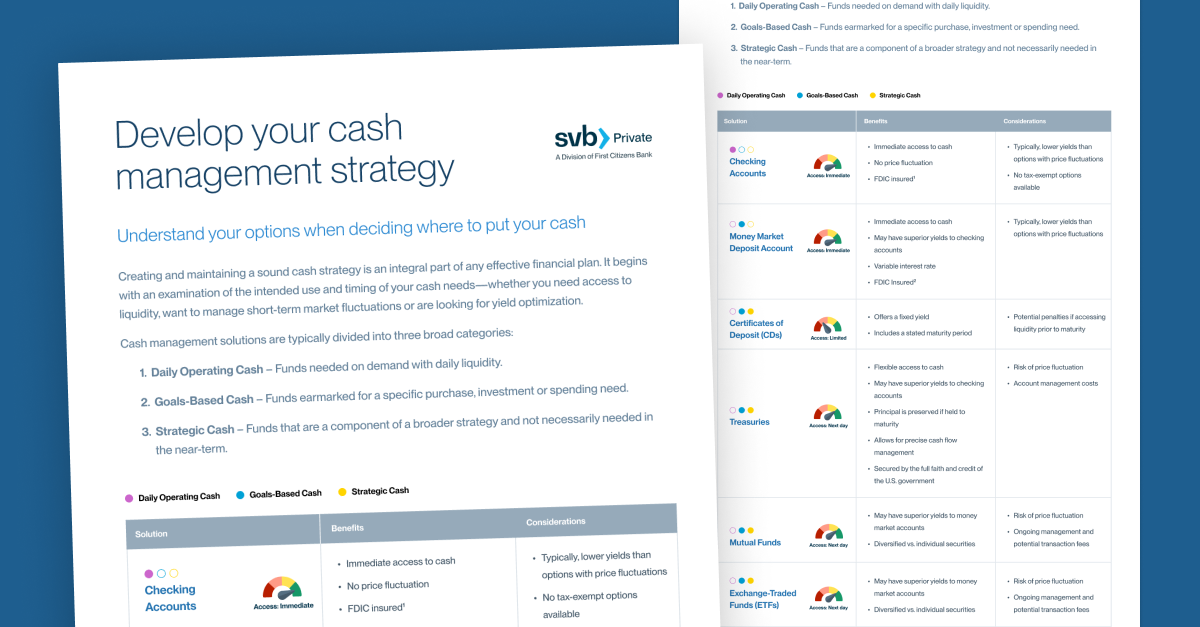We’re pleased to provide you with insights like these from Boston Private. Boston Private is now an SVB company. Together we’re well positioned to offer you the service, understanding, guidance and solutions to help you discover opportunities and build wealth – now and in the future.
How to keep your cash management processes optimized—and safe
Whether your firm is a start-up, an ongoing enterprise, or a not-for-profit organization, cash management is an essential part of your business. Virtually every business needs an operating deposit account with an effective cash management approach.
The core objective of effective cash management has always been to maximize available cash by speeding up receivables and delaying payables. But, increasingly our team of consultants work with business clients to achieve that objective, they must also remain mindful of the vulnerabilities that improvements in the cash management process can introduce.
“In today’s increasingly digital world, as virtual transactions replace paper records, your cash management approach must also address the possibilities for fraud and security breaches that digitized payments represent,” says Michael Gagnon, Vice President and Cash Management Advisor at SVB Private.
A simple solution to make wires safer
A recent case in point was a non-profit, private secondary school that Gagnon helped explore better ways to manage their tuition payment process.
As a result of a discussion about their process for international students (who typically paid tuition in full via wire transfer), he discovered a critical vulnerability. “On their website, when they instructed students to wire their money directly to the school’s operating account, they also included their bank routing number. So they were divulging sensitive information and putting their school and the bank at risk,” recalls Gagnon. “In addition, because all tuition payments were going into the same operating account, it would create a tremendous burden to shut it down and open up a new one if that account ever got compromised.”
The solution he recommended: Open a second account for wire payments with controls to help mitigate any type of fraud. “It was relatively simple solution that keeps everything separate and safe for them,” explains Gagnon. If the security of that account is in jeopardy, “it’s easy to shut it down and keep their operating account intact and uncompromised.”
Remote deposit for speed and cost savings
An increasing number of his clients are also adopting remote deposit, which is a safe, efficient way to process many checks at once electronically. “In the past, schools would ask students to send tuition checks to a lockbox and the bank, in turn, would open the mail, and then deposit each check,” explains Gagnon. The problem was, schools were paying to use the box for 12 months although it was needed only for the four months each year when payments were processed. It was idle for the other eight months.
“Today, instead of paying for a lockbox, most schools use remote deposit. It’s less expensive because you simply scan the checks you receive in batches then hit a button to send those images to the bank in seconds. The bank, in turn, quickly makes a deposit based on those images.”
As an aside, Gagnon shares the fact that the move to remote deposit technology that accepts images as a valid replacement for paper checks was one result of the changes precipitated by the events of September 11th.
“When planes weren’t allowed in the air for three days, the manual clearing of paper checks transported by air to locations throughout the country was no longer possible. The economy stopped. No checks were cleared. Nothing got paid,” he explains. “Today, instead of transporting paper checks around the country, banks and businesses can use technology to make images of checks they receive, and send those images electronically to other banks to clear them.”
Best practices to assure efficiency and safety
When making their cash management recommendations to clients, Gagnon and his colleagues also try to make sure their clients follow the banking industry’s best practices for cash management, including:
Implementing dual controls for all transactions
Having two or three different people look at every transaction can help assure its accuracy and eliminate the potential for internal fraud. With additional controls, one person creates the checks, a second person signs them, and a third person reconciles them at month end--versus the same person writing, signing, and reconciling the checks--with no oversight.
Creating dual controls for cyber transactions overseas
Again, with extra controls, if one person queues up a wire, a second person must release it, reducing the chances of fraud for the account.
Setting up fraud protection tools
Gagnon suggests protecting all cash accounts, by using Positive Pay or ACH (Automated Clearing House) capabilities.
Anybody who writes more than 300 checks per month should be enrolled in Positive Pay, he says, because the high volume increases the likelihood that one of the “bad guys” will get access to your check numbers.
Conducting an annual review
For Gagnon, the most important “best practice” for cash management professionals is to schedule an annual review.

I like to meet face-to-face with clients at least once a year to make sure that, as circumstances and technology change, we’re able to adapt their processes, if needed, while still following best practices and keeping information and accounts safe.
Although he might exchange phone calls and e-mails regularly with clients, he believes it’s still important to sit down for a more structured annual review. It’s always a good idea to periodically review your cash management plan and investing strategy in light of your total financial picture.
Start by asking the right questions
A cash management consultant like Gagnon can help you put the best practices for cash management in place for your business or non-profit as well as identify problems areas and opportunities to improve processes and protect vital information.
To do this, he or she will work closely with you to understand the unique cash management needs of your business or non-profit. “As a consultant, it’s my role to be a strong partner and advocate and not just sell a product,” says Gagnon.
Typical questions he might use in his client discussions include:
a) Who is paying you and how are they paying you?
b) Do you have the appropriate protections in place?
c) Are you following industry best practices?
d) What are the key pain points that you and your staff are experiencing in managing your receivables, payables, and payroll accounts? What is frustrating them – and you?
“Your consultant should take the time to work through these questions and get to know your firm and the people processing payments and managing cash before recommending any solutions or adjustments based on your organization’s unique needs,” concludes Gagnon.














